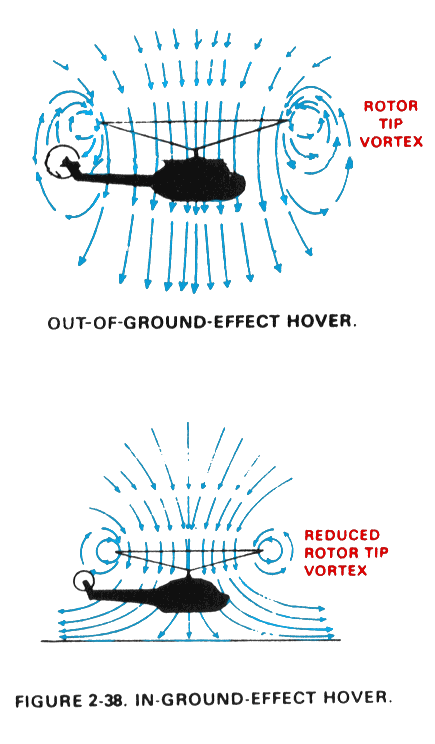CFI: Kristie H.
Aircraft: Robinson R22 Beta II
Aircraft ID: N8340S
Duration: 1.3hrs
Cumulative Time: 28.3hrs

First flight in two weeks! Been on vacation for the holidays and went to the Outer Banks with some friends over new years. Felt really good to get back into the pilot seat. Little bit of rust here and there, but not as much as before. You really do benefit from muscle memory. The day was really windy so I had a lot of pedal work to do on this flight, but it was good... right back in to the deep end of the pool.
We started a new lesson today... and that included a running landing. This is a maneuver necessary when you don't have sufficient power to hover and land normally. This can happen for a number of reasons. The most obvious of which would be extremely poor flight planning and not determining if you were able to hover at your intended landing site. There is something called IGE (In Ground Effect) hover. This is a condition where the helicopter is within one rotor distance of the ground and two components take effect. The first is the reduction of induced flow. Basically a reduction in induced drag and therefore the power needed to maintain the same vertical lift is reduced. And, second, the rotor-tip vorticies are reduced, increasing the efficiency of the rotor. The essentially generates a bit of a pillow of air and allows you hover with less power.
Anyway, you use this effect to help with landing. If for some reason you don't have the power to hover to get from OGE (Out of Ground Effect) into IGE, you will need to rely on your forward motion and the efficiencies of ETL to keep your lift until you are ready to land. If your poor planning has you landing at too high of an altitude, or you have a magneto failure and can't produce the required power to land safely, you will need to do a running landing.
You come in for a normal landing... and "go low" then "go slow". This means, you are at about 50 knots and a few feet off the ground. Then, you slow down. As you do, you will slowly drop out of your ETL efficiency and touch down... at about 20 knots. You use your tail rotor to steer your skidding helicopter to a stop.
It is a bit un-nerving at first... it just feels wrong to be going that fast that close to the ground and coming to a skidding halt. But, years of Big-Wheel skid turns finally pay off.
1 comment:
Seems to me that there are two situations which call for either a running landing or the expectation of having to maybe do one.
The first is a flight terminating in significantly higher density altitude than the origination. For flight planning purposes, most pilots assume a slightly higher fuel burn than they're likely to actually see. For example, I use 16 gph in an R44-II, but the actual burn is more likely to be around 15.5. I'm going to be a little heavier than I planned. Likewise, the winds aloft forecasts aren't all that accurate, and if I have a little more tail wind or a little less head wind, I'm going to be heavier than I planned. Given that, I'm going to assume I might need a run-on landing and make my approach with that in mind. I may be able to come to a hover and that's fine, but if I can't I won't be slamming the ship down from 5 feet.
The second reason is that some modest size helicopters have non-redundant hydraulic assist systems. Examples are Jet Rangers and R44's. If the hydraulics fail, you've got something of a fight on your hands. In forward flight, the cyclic isn't much of a problem, but it takes some muscle to keep the collective up where it belongs -- it's pretty tiring. But get slow, as in hover slow, and it becomes virtually impossible to avoid overcontrolling the cyclic. This is because it becomes non-linear -- the first 1/4" of movement feels normal, but beyond that you're forcing fluid through the valves and it takes pretty high stick pressures.
So the trick becomes an exercise in maintaining control by not getting slow enough that you can't control the cyclic -- ie. a run-on landing. We practice hydraulics failures every 6 months, BTW. It makes for a great shower of sparks and some neat noises as the skid shoes drag down the runway :)
There was an accident in LA some years back with a TV news Jet Ranger had a hydraulics failure. The pilot elected to fly 3/4 hour back to her home field rather than land at the nearest airport. She was so fatigued that she crashed in the landing attempt.
Post a Comment